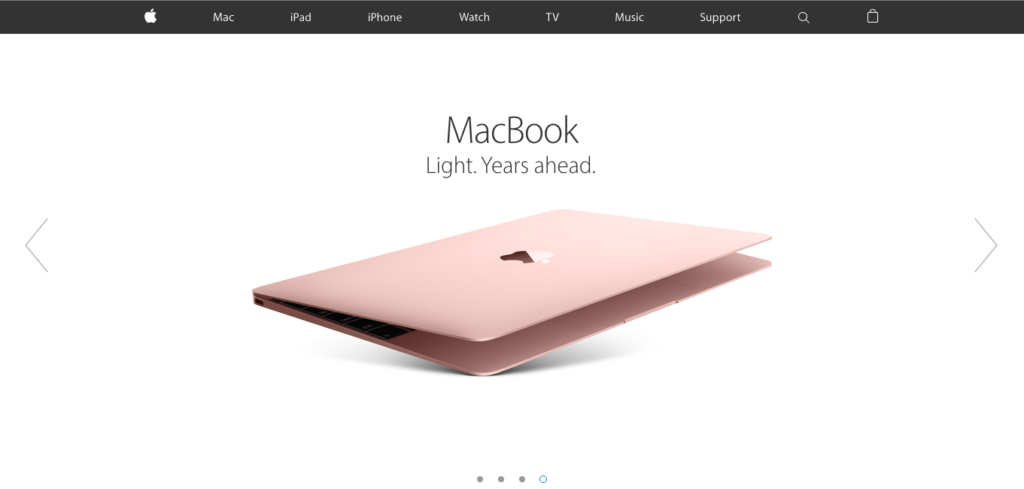In a world of changing Google algorithms and mixed messages about what constitutes good SEO, it can be difficult to understand what comprises quality website design. While everyone knows that an effective website should be beautiful, simple, functional, and easy to navigate, not everyone actually puts this into practice. With this in mind, we’ve compiled a list of the top 10 elements of great website design. Read on to learn more.
Why Good Website Design Matters
As it stands, 39% of people will leave a website if the images within it take too long to load. Not to mention 44% will leave if the website doesn’t feature the company’s contact information, and 44% will abandon ship if the layout is just plain ugly.
With this in mind, it’s easy to understand exactly why good website design is so critical companies everywhere.
In the modern age, good website design is about much more than vanity: it’s about conversions. In a world where the web is saturated with highly functional, quality sites, pages that offer anything less than a stellar user experience are virtually guaranteed to be overlooked. This leads to lost profits and sacrificed leads for the site owner.
Luckily, it doesn’t have to be this way.
The Top 10 Elements of Effective Site Design
1. Compelling Visual Layout
Think of great website design like feng shui for the internet: the eye must be able to travel across the page without getting hung up on or “bumping into” anything. There are many elements necessary to achieve an unobstructed visual flow, including:
- Leave an ample layer of white space around blocks of content
- Ensure pictures you include are crisp, high-quality, and quick to load
- Keep your color scheme cohesive
For a streamlined and professional site, be sure to stay away from cheesy, animated graphics, low-quality visuals, or flawed, poorly written blocks of content. While these things may seem small, they can spell the difference between a successful site and a complete flop.
2. Quality Content
You can have the prettiest site in the world, and it won’t count for much if your content is lacking. When given 15 minutes to interact with content, a whopping two-thirds of people gravitate toward compelling, beautifully designed content rather than plain content. With this in mind, be sure that your content is high-quality, both in terms of its layout and its form.
The content should be broken up into small, readable blocks on the page and must be thoroughly checked before it goes live for spelling and grammar errors or inaccuracies. Additionally, you should always ensure that the content on your page features relevant keywords. Optimize the content properly for your target audience and for local SEO, if applicable.
3. Streamlined Navigation
There is nothing more frustrating than a site that won’t let you navigate to the home page from the blog, or vice versa. If your readers feel like they have to jump through hoops to find their way through your site, you’re virtually guaranteed to miss out on leads.
Avoid this by ensuring your user interface is as streamlined and simplified as possible. Every page should feature your company’s contact information and a search bar, and unnecessary pages, tabs, and content should be kept to a minimum.
4. A Quality “About” Page
One of the first places many users go on your website is your “About” page. Part of this has to do with the huge importance that’s been placed on brand storytelling in recent years. Today, people want to know who your company is, where you come from, who your founders are, and what you care about. If you don’t have a complete and comprehensive “About” page, you’re depriving your followers of the opportunity to get to know you better.
To improve your “About” page, evaluate the content to be sure it’s relevant, honest, succinct, and current. If you’re going to use photos on your “About” page, be sure that they’re real photos of your team, buildings, and products – not stock photos you pull from the internet. While these may seem like small updates, they can go a long way toward boosting the effectiveness of the page’s content.
5. Complete Contact Information
Right now, 51% of people believe that contact information is the most critical element that most websites are lacking. With this in mind, it’s easy to see why updating yours is so critical. Ideally, every page of your website should feature your company name, address, and phone number.
Your “Contact” page should also include your store hours and a map of your location. In addition to making it easier for users to find you, this simple step also increases the likelihood that you will appear in local search results.
6. Readable Typography
Today, mobile devices are responsible for 2 of every 3 minutes people spend online. Because of this, it’s critical to ensure that your website’s content is readable for all of your visitors – even those viewing it on a tiny screen.
The best way to facilitate this is to use large, readable typography that shows up well on desktop and mobile screens alike. In addition to making your content easier to interact with, ensuring good typography can also help make your brand more memorable – especially if you opt for a unique typeface not typically seen elsewhere.
7. Optimized Images
While it’s common knowledge that website content should be optimized for search, your website images should be, as well. Because search engines can’t (yet) interpret images, optimizing the alt. tags of your visuals with relevant descriptions and keywords can help provide your site with some additional SEO juice.
Additionally, it’s important to ensure that any image you use on your site is the correct size and resolution. This helps prevent pixelated images or images that won’t load.
8. Flat Design Schemes
Apple has historically been the leader in many things. The company is famous for expert-level brand storytelling, quality design, and outstanding products, but they also pioneered the trend of flat design. If you head to Apple’s website, you’ll notice that the design elements don’t fake depth or shadow, which does two important things.
First, this so-called “flat design” makes it easier for the page to load on various devices – and since load time affects SEO ranking, it’s possible that flat design may actually help your site rank more effectively. Second, it makes it easier for readers to interpret visually.
Ideal for any company that wants a clean, professional, crisp-looking website, flat design is a fantastic web design trend that shows no signs of slowing down in the future.
9. Homepage Videos
There are two great ways to do a homepage video: you can either insert it in a prominent location on your homepage, or you can make your entire homepage a video. Companies like PayPal have already done this on their mobile platforms, and it’s a great way to drive engagement and interest without making huge changes.
Regardless of what you choose to do, remember that adding a video to a landing page can boost your conversion rates by upwards of 80%, so it’s a wise thing to consider.
10. Video Descriptions
After watching a company’s marketing video, customers are 64% more likely to purchase products from the company than those who didn’t watch a video. Because of this, dozens of companies in various industries are including video descriptions for their services, products, and offerings. In addition to being easy for mobile users to absorb, these details are also much more personal, which promotes bonding between the consumer and the company and can help inspire a long-term relationship.
The Case For Modern Website Design
As long as companies have been doing business online, a great website has been a critical factor for success. Today, however, it’s more important than ever before. The web is saturated with beautiful, informative, functional, well-designed sites. In order to stand out from the competition, it’s essential for companies who make sales or generate leads online to offer modern sites that users love. In addition to providing a good first impression of the company, sites like these also promote bonding and loyalty between companies and their customers.
While offering modern website design is critical, it’s also more involved than it has been in the past. In addition to the fact that today’s sites must be beautiful, they must also feature quality images and videos, unique fonts, and beautiful typography. They should also contain relevant and up-to-date content, predict and meet a reader’s needs, and offer a consistently simple and streamlined user interface.
While this sounds like a tall order, the companies that manage to meet the mark are the ones who ultimately reap the payoff of increased business, more leads, bigger bottom lines, and a more secure spot in Google’s coveted SERPs. Because of this, it’s critical for companies in all industries to continue striving toward fresh and innovative sites. Far and beyond simply improving business, these sites stand the potential to dramatically elevate the company as a whole.
Struggling to develop a beautiful website that you love? Contact Thrive Internet Marketing, a full service digital marketing and web design company, for professional, high-quality assistance.






